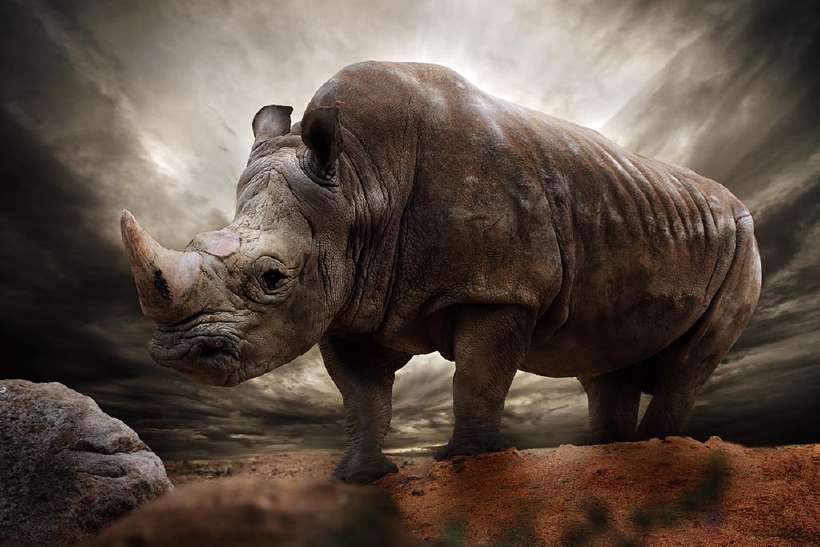Rhinoceros: On the Comeback Trail
Home / Science for Kids / Planet Earth for Kids / Rhinoceros: On the Comeback Trail
Next to the tusk-bearing elephants, rhinos are the other large animals heavily targeted by poachers. Rhinos are poached for their horns and these are sold in the black market at astonishing prices.
Since 1977, trade in rhino horn has been banned but poachers and smugglers still hunt and kill these gentle creatures to meet the demands of the rhino horn in markets in Central Asia and the Far East.
For some years now, rhinos have been high on the endangered list. Thankfully, things are looking a lot brighter both for the African white, and for the greater one-horned Asian rhino (more commonly known as the Indian rhino).

The white rhino population in Africa has recovered a little over the last twenty years due the rigorous policing by game wardens at the Kruger National Park in South Africa. To deter poachers, game wardens sometimes cut off the horns so that these animals are not unnecessarily killed.
According to latest statistics, the Indian rhino species too is making a steady comeback and conversationalists say that Kaziranga National Park in Assam, now houses some 1,600 one-horned rhinos – making it one of the world’s largest rhino reserves.
In the past, poachers have operated in isolated parts of the reserve (between 1980 and 1995, about 600 Indian rhinos were killed), but tight security has now overcome this menace. But Kaziranga faces a dire shortage of rangers and wardens to cover the entire sanctuary – only 150 rangers to cover 430 square kilometres of area.
Though the odds are heavily in favour of the poachers, villagers living on the periphery of the sanctuary are now being recruited as guards, giving a much needed boost to security. Apparently this arrangement is working out and in the past few months there has been no untoward incident in the sanctuary.
The value of rhino horns have increased a thousand fold as people are willing to pay astronomical sums for these horns. Smugglers pay local poachers anything from Rs. 30,000 to Rs. 50,000 (1 dollar = Rs 46 in current prices) for a horn and sell it in the international markets at a whopping Rs. 1.5 million per kilogram! (Considering at an average, a full-grown rhino horn weighs about two to three kilograms, the stakes are extremely high).
The horn is in great demand in East Asia and China as it is believed that the horns have medicinal value while sometimes the poached horn is used to make handles of daggers.
China is the main producer of medicines containing rhino horn with factories illegally using about 650 kilos of horn a year. A rhino horn is believed to cure a wide range of illnesses from skin diseases to heart trouble and is even considered an aphrodisiac, but scientists and doctors scoff at the idea and say that there is no proof that rhino horn is indeed beneficial.
Although the rhinoceros family was once widespread today only five species exist: three in Asia and two in Africa.
502 words |
5 minutes
Readability:
Grade 10 (15-16 year old children)
Based on Flesch–Kincaid readability scores
Filed under: planet earth
Tags: #indians, #africa, #rhinoceros, #horns, #rhinos, #sanctuary
You may also be interested in these:
How Many Kinds of Rhinos are There?
Army Comes to the Aid of Birds
The Magic Carpet
When asked by an anthropologist what the Indians called America before the white...
Chetak's Descendents